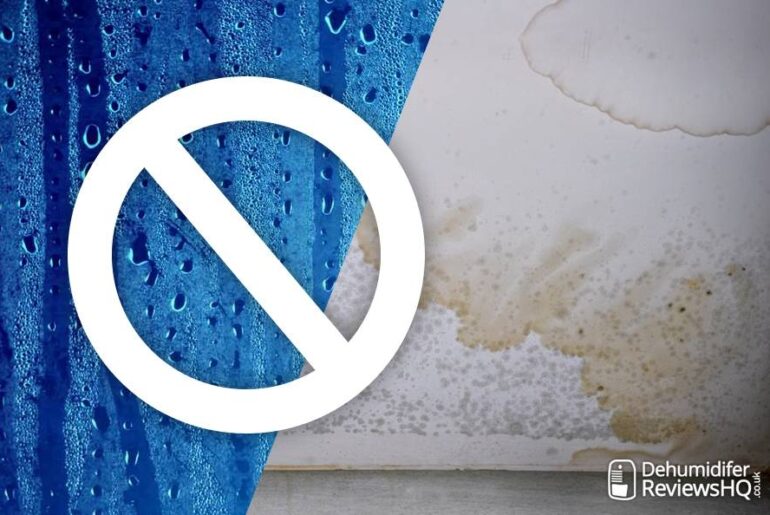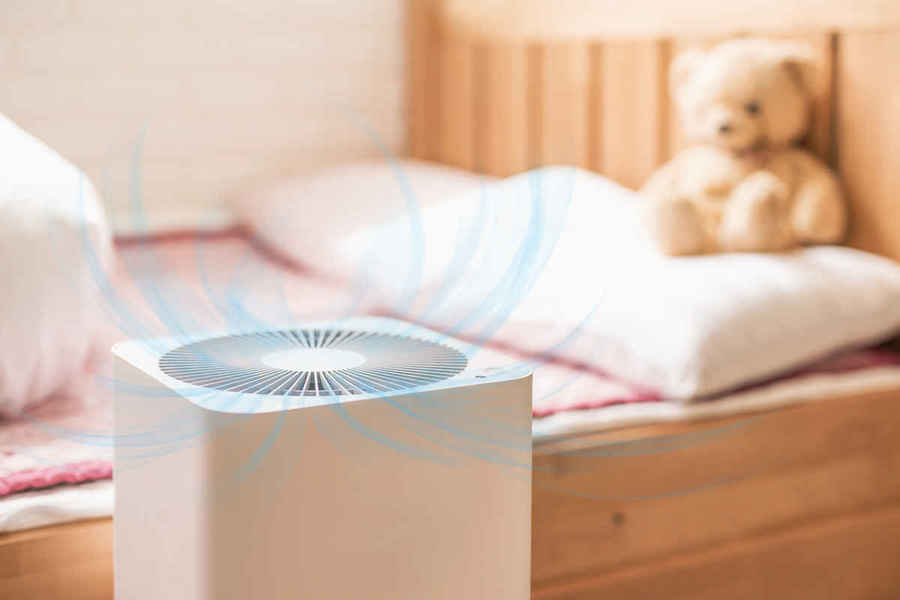Wall dampness can be a persistent problem that, if left untreated, can have severe consequences on our homes and health. From mould growth to peeling paint to structural damage, damp walls can lead to several problems that can be costly and inconvenient to fix.
Whether you are a homeowner or tenant, staying on top of the dampness problem can save you a lot of headache in the long run. But to do this, you have to be well-versed on the topic. That entails knowing what wall dampness is, its causes and effects, how to detect it, possible preventative measures, and the right treatments.
That is where this guide comes in. We will offer you practical information and advice to tackle wall dampness and keep your home in mint condition. We’ll also debunk some common misconceptions about wall dampness and provide a range of real-life case studies to show how others have tackled this problem.
Causes Of Wall Dampness
Damp walls should be a primary concern for two reasons. First, they can lead to severe structural damage to property. Secondly, your health may be adversely affected.
Preventing wall dampness starts with knowing what causes it in the first place. With that in mind, below are factors that may expose the walls of your home or working space to excessive and damaging moisture levels.
1) Condensation
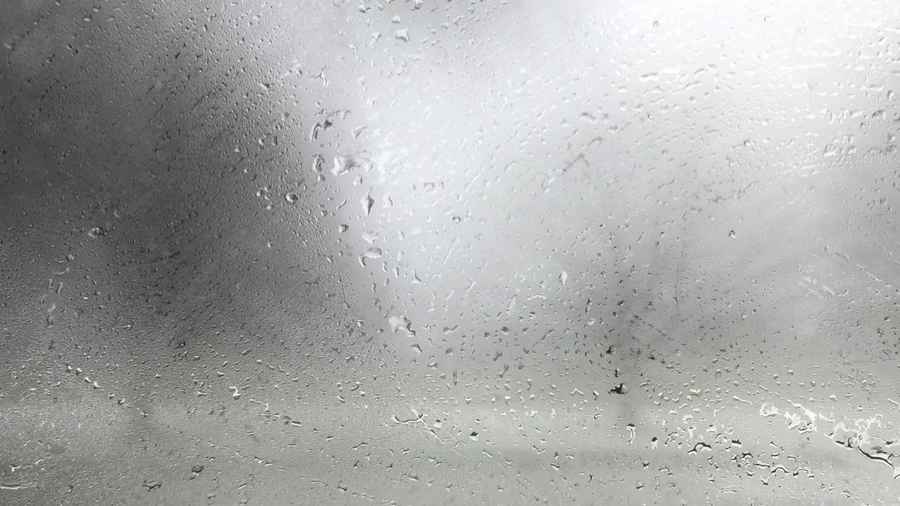 Condensation is one of the most common causes of wall dampness, especially in poorly ventilated areas. It occurs when warm, moist air comes into contact with a cold surface. The moisture in the air condenses on the surface, resulting in wet patches on walls and can lead to the growth of mould and mildew. Common areas where condensation occurs include kitchens, bathrooms, and poorly ventilated bedrooms.
Condensation is one of the most common causes of wall dampness, especially in poorly ventilated areas. It occurs when warm, moist air comes into contact with a cold surface. The moisture in the air condenses on the surface, resulting in wet patches on walls and can lead to the growth of mould and mildew. Common areas where condensation occurs include kitchens, bathrooms, and poorly ventilated bedrooms.
2) Penetrating Damp
Penetrating damp occurs when water enters the walls through external defects such as cracks, gaps, and faulty guttering. Water can also penetrate walls through the roof, around windows and doors, and through defective plumbing. Penetrating dampness commonly occurs after rainfall and manifests as huge, dark patches on walls.
3) Rising Damp
Rising damp occurs when water from the ground travels upwards through the masonry or brickwork of a building. It can stem from a number of issues, including the lack of a damp-proof course (DPC), an ineffective DPC, or the bridging of the DPC due to high ground levels.
Rising dampness presents in multiple ways. For instance, it could occur due to a tide mark on the wall, a damaged skirting board or plaster, or peeling wallpaper.
4) Leaks And Floods
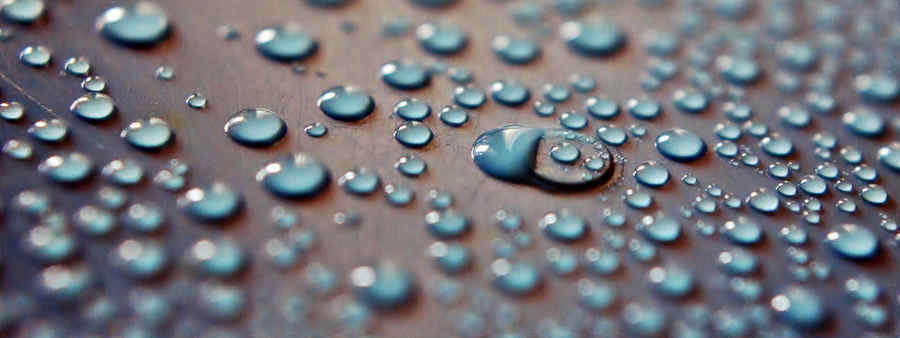 Leaks and floods are common causes of wall dampness and can result from faulty plumbing, damaged roofs, and heavy rains. The resulting wetness can penetrate through walls and ceilings, causing visible marks on affected surfaces. Leaks are easy to discern, often presenting as visible watermarks, discoloured patches, and damp or musty odours.
Leaks and floods are common causes of wall dampness and can result from faulty plumbing, damaged roofs, and heavy rains. The resulting wetness can penetrate through walls and ceilings, causing visible marks on affected surfaces. Leaks are easy to discern, often presenting as visible watermarks, discoloured patches, and damp or musty odours.
Effects Of Wall Dampness On Your Health
The importance of preventing wall dampness boils down to your well-being. The reason for that is damp walls expose us to serious health risks, especially if not taken care of immediately.
The combination of moisture and warmth provides an excellent breeding ground for various types of mould and fungi. Exposure to such hazards can cause the onset of respiratory problems, allergies, and other health issues.
(1) Asthma
People living in damp homes are more likely to suffer asthma attacks than those who live in well-ventilated and dry homes. A study by the University of Exeter Medical School found that damp conditions in homes increase the likelihood of wheezing by 26%. Furthermore, people living in damp homes are 34% more likely to suffer from a persistent cough.
(2) Allergies
Allergens such as dust mites tend to thrive in damp environments. Inhaling air loaded with dust mites can cause skin rashes, sneezing, and other allergic reactions. Additionally, mould spores can trigger allergic reactions in sensitive individuals.
(3) Respiratory Problems
Dampness in homes can lead to the onset of respiratory problems. The World Health Organization (WHO) has indicated that occupants of damp houses are at a higher risk of respiratory tract infections, unrelenting cough, shortness of breath, and bronchitis.
(4) Other Health Issues
Dampness can also have other health implications, such as headaches, lethargy, and joint pains. Furthermore, exposure to certain types of mould can cause serious health problems such as infections, a weakened immune system, or the production of mycotoxins that can lead to cancer.
Given the risk wall dampness poses to your health, you must deal with any signs of it in your home swiftly to prevent the onset of health issues. It is also advisable to seek professional help immediately if you experience recurring health problems that seem to be related to dampness in your home.
How To Detect Wall Dampness
Early detection is the best strategy for preventing wall dampness. So, what are some of the tell-tale signs to look for?
There is more than one way of detecting wall dampness in your home. In this section, we will discuss the three primary methods.
Visual Inspections
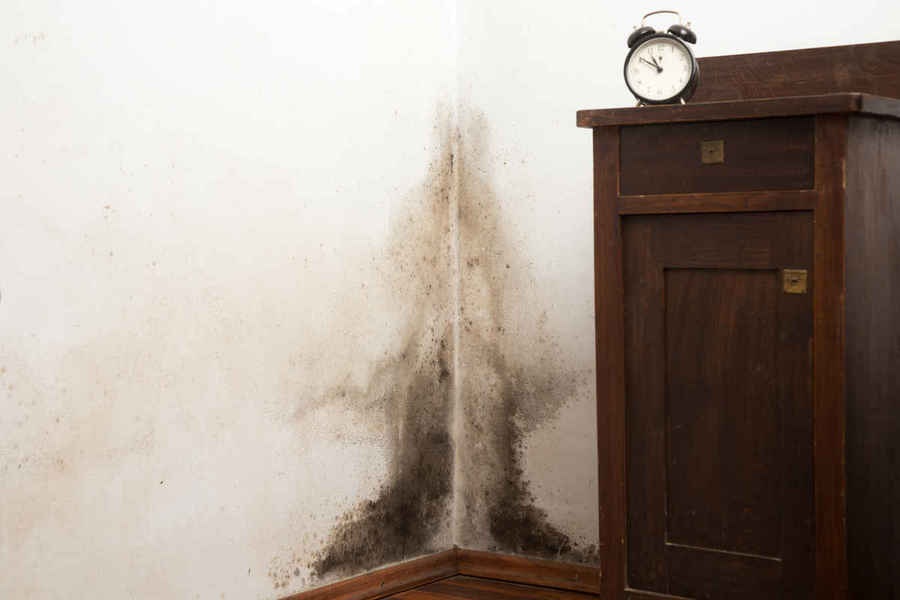 Visual inspections are the simplest and most cost-effective way to check for dampness. Signs that point to excess moisture and water damage include:
Visual inspections are the simplest and most cost-effective way to check for dampness. Signs that point to excess moisture and water damage include:
- Damp patches or water stains on the wall surface
- Mould or mildew growth on the walls
- Salt stains or efflorescence on the walls
- Peeling or flaking paint or plaster
- A musty smell
If you observe these signs on your walls, you may need to investigate further to determine the source of the dampness.
Use A Moisture Meter
Moisture meters are effective at measuring the moisture level in walls. They use the simple principle of measuring electrical resistance on a surface.
Using one involves inserting two small pins into the wall surface you want to inspect. The higher the electrical resistance you detect, the drier the wall. In contrast, a lower resistance indicates a damp wall.
To use a moisture meter:
- Select a suitable location on the wall with visible signs of dampness or water damage.
- Switch on the moisture meter and select the appropriate setting, for example, “wood” or “drywall.”
- Insert the two pins into the wall surface, ensuring they are at the same depth, and wait for the meter to display the moisture reading.
- Repeat the process in different places on the same wall or other walls to determine the extent of the problem and the source of the dampness.
You can purchase moisture meters from many home improvement stores or rent one from tool hire companies. Ensure you follow the user instructions for your specific device to obtain accurate readings.
Thermal Imaging
Thermal imaging uses infrared technology to detect temperature differences on walls and surfaces. It is an efficient way to detect dampness, especially in hidden areas of walls and ceilings.
To detect dampness using thermal imaging:
- Turn off or cover any heat sources, such as radiators or heaters to ensure accurate readings.
- Use a thermal imaging camera to take images of the wall surface and observe any temperature differences between areas of the wall.
- Dark blue or purple colours on the camera indicate colder areas that may be damp, while red, yellow or orange hues represent warmer areas with less moisture.
- Repeat the process on different walls or areas to determine how far the dampness has spread and its primary source.
Thermal imaging is an effective way of unearthing difficult-to-spot dampness, and professionals often use this method to get accurate results. However, it can be costlier than the other two methods mentioned above.
Tips For Preventing Wall Dampness
(1) Proper Ventilation
Condensation is one of the leading causes of wall dampness. A surefire way of preventing condensation is to make sure that there is adequate ventilation in your home. You can achieve this by installing extractor fans in kitchens and bathrooms and checking air bricks/vents to ensure they are not blocked.
(2) Insulation
Insulation helps to regulate the temperature in your home and prevents warm, moist air from coming into contact with cooler surfaces. You can achieve proper insulation through cavity wall insulation or loft insulation. The simple presence of some insulation can help prevent the formation of condensation and reduce the likelihood of dampness occurring in your walls.
(3) Waterproofing
Waterproofing your home is another effective way of preventing wall dampness. You can achieve this by installing a damp-proof course (DPC) or placing waterproof coatings on external walls. A DPC is an impervious material that prevents moisture from rising into the walls, while waterproof coatings protect the walls from outside elements such as rainwater.
(4) Regular Maintenance
Regular maintenance is essential to prevent wall dampness. Homeowners should ensure that gutters and downpipes are clear and functioning correctly, as blocked or broken gutters can cause water to enter the walls. They should also check for any leaks from pipes and repair any damage to the roof, as water can seep through the roof and cause dampness in the walls.
Regularly painting and maintaining external walls can also help to prevent dampness.
Treatments For Wall Dampness
The solutions to wall dampness will depend on the exact cause and the degree of damage, not to mention the age and type of the affected wall. But to give you a general idea, here is a look at solutions for the common causes we examined earlier.
Condensation Solutions
As mentioned earlier, condensation is the most common cause of wall dampness in our homes. Solving this problem involves reducing the amount of moisture in the affected areas. Here are some possible condensation solutions:
- Install extractor fans in bathrooms and kitchens, and use them regularly to remove excess moisture.
- Ventilate your home by opening windows and doors, especially when doing laundry, cooking, or showering.
- Insulate your walls, ceilings, and floors to prevent cold surfaces from attracting moisture and creating condensation.
- Use a dehumidifier to remove damp air from your home.
Penetrating Damp Solutions
Since penetrating dampness is brought on by water seeping into walls from the outside, solving this problem requires locating and fixing the source of the water ingress. Here are some possible penetrating damp solutions:
- Repair any damaged roof tiles or flashing, and ensure that gutters and downpipes are clear and working optimally.
- Replace missing or damaged pointing, render or bricks.
- Install a waterproof membrane on the outside of your walls.
- Apply a water-repellent coating on the outside of your walls.
Rising Damp Solutions
Rising dampness stems from ground moisture rising into the walls by capillary action. Dealing with this problem most likely requires professional help and may include:
- Installation of a chemical damp-proof course which will prevent rising dampness from moving up the wall; a routine method is inserting a silicone solution into holes drilled into the wall
- Replacing damaged or missing floorboards
- Tanking: This option involves applying a waterproof coating on the inside of the affected walls and floors
- Installation of a vertical drainage system that allows for water collection before it gets to the wall
Leaks And Flood Solutions
In the case of leaks and floods, the first step is to locate and repair the source of the water damage. In addition, it may be necessary to:
- Remove any water-damaged plaster or wallpaper
- Dry the affected areas thoroughly using dehumidifiers or fans
- Disinfect the area with antimicrobial products to prevent mould growth
- Re-plaster or re-paint the affected areas once they are dry
DIY Vs. Professional Services
When dealing with wall dampness, homeowners often consider whether to handle the problem themselves or hire a professional service. While going the DIY route appears to be the cheaper option, it may not always be the best solution. In this section, we will compare the advantages and disadvantages of both options so that you can make an informed decision.
DIY
DIY is a common choice when it comes to dealing with wall dampness, especially for those who want to save some money. Here are some advantages and disadvantages:
Advantages
- Cost-effective
- You have control over the process
- Faster turnaround time
Disadvantages
- Lack of expertise and experience
- May cause more harm than good
- No guarantees on the effectiveness of the treatment
Professional Services
Professional services are another option for dealing with wall dampness, but they may come at a higher cost. Here are the pros and cons:
Advantages
- Expertise and experience
- Use of advanced equipment and techniques
- Guaranteed effectiveness of the treatment
Disadvantages
- Higher cost
- No control over the process
- May take longer to complete
It is important to note that the cost of professional services will depend on various factors, such as the extent of the problem, the location, and the type of treatment required. However, it is crucial that you consider the long-term costs of not fixing the problem definitively the first time around.
Overall, DIY may be a cost-effective solution for minor wall dampness problems. But in more severe cases, it is wiser to hire a professional service to ensure the effectiveness and longevity of the treatment.
Costs Of Wall Dampness Prevention And Treatments
Wall dampness can cause structural damage to buildings and health problems for residents. Therefore, it is essential to prevent or treat damp issues promptly. However, many homeowners hesitate to tackle the problem due to the perceived high costs of prevention and treatments.
The main thing to note is that the costs involved in the process depend on various factors, such as the severity of the issue, the type and location of dampness, and the method of prevention or treatment.
Prevention
The cost of preventing wall dampness can vary depending on the measures taken. These are the average costs of the preventative measures discussed above.
- Proper Ventilation: Installing vents or extractor fans in damp-prone areas like bathrooms and kitchens can improve ventilation and reduce the chances of dampness. The average cost of installing a bathroom extractor fan can range between £100 and £200 depending on the type of fan and installation required.
- Insulation: Insulating walls can reduce the chances of condensation and dampness. The cost of wall insulation can vary depending on the area to be insulated and the materials used, but it can range from £200 to £500 for a typical UK home.
- Waterproofing: Proper waterproofing of walls and roofs can prevent water ingress and dampness. Exact waterproofing costs depend on the size of the area in question, but charges can start from about £30 per square metre.
- Regular Maintenance: Regular inspection and maintenance of gutters, downpipes, and roofs can prevent dampness caused by water leaks. Maintenance costs can vary depending on the extent of the work required, but it is far cheaper than remedial work for dampness.
Treatments
Once wall dampness has already set in, treating the damage is essential to prevent further structural decay and health problems. Much like preventative measures, the cost of treatment will depend on the severity and type of dampness.
- Condensation: Improving ventilation and insulation and reducing moisture sources is action enough to solve condensation problems. The cost of a permanent solution can range from £500 to £3000, depending on the extent of the work required.
- Penetrating Damp: Remedial work for penetrating dampness can involve repairing or replacing roofs and gutters, re-pointing brickwork, and applying water-repellent coatings. The cost of treatment can range between £1000 and £5000, depending on the extent of the damage.
- Rising Damp: Since this type of dampness results from groundwater rising through walls, restoration work involves installing a damp-proof course (DPC), removing and replacing affected plaster and skirting boards, and applying a waterproof render. The cost of a typical rising damp treatment can range between £2000 and £8000, depending on the size of the affected area, the extent of damage, and the method used for treatment.
- Leak or Flood: Water leaks or floods can cause dampness and require immediate action to prevent structural damage. The cost of remedial work for water leaks or floods can vary widely depending on the extent of the damage, but it can cost upwards of £5000 to repair a water-damaged wall.
It is important to note that the costs mentioned above are approximate and can vary depending on the location, contractor, and materials used. Homeowners should get multiple quotes and compare before undertaking any preventive or remedial work for wall dampness.
Common Misconceptions About Wall Dampness
Damp-Proof Paints
One of the most common misconceptions about wall dampness is the belief that damp-proof paints can effortlessly solve the issue. However, these paints are ineffective at treating damp problems that result from rising or penetrating wetness.
Damp-proof paints create a barrier that prevents moisture from seeping into the walls and forming damp patches. But if the source of the dampness is not identified and treated, the paint will eventually peel and blister, causing wet conditions to return. So while helpful in treating mild cases of condensation, damp-proof paints do not offer a long-term solution for more severe cases of wall dampness.
Damp-Proof Course (DPC) Injection
Another common misconception is that Damp-Proof Course (DPC) injections are an infallible treatment for rising dampness. DPC injections involve drilling holes into the wall and injecting a chemical damp-proof course into the masonry. This waterproof material creates a barrier that prevents moisture from rising upwards through the wall.
In some cases, DPC injections can cause more problems than they solve. Incorrectly performing the injection poses a risk of damaging the mortar joints and potentially causing the walls to collapse. Additionally, if the cause of the rising dampness is something other than a lack of a damp-proof course, such as a leaking pipe or blocked guttering, then a DPC injection will not solve the problem, and the dampness will persist.
Installation Of DIY Ventilation Units
Many homeowners are of the belief that installing a DIY ventilation unit will effectively solve condensation problems. While it is true that proper ventilation can help to reduce moisture levels, setting up a ventilation unit requires specific expertise and knowledge. An incorrectly installed ventilation unit can exacerbate the problem by causing a reduction in air circulation and a subsequent increase in humidity levels.
Additionally, a DIY ventilation unit may not be suitable for huge properties or ones with existing structural issues. It is always best to consult a professional before you go the DIY way.
Legal Issues Of Wall Dampness
Wall dampness affects not only the structural integrity of a building but also poses health hazards. For this reason, it is deemed a significant problem whereby landlords bear the legal responsibility of ensuring a property is safe and habitable for tenants. Failure to address dampness issues can lead to legal ramifications for the landlord.
Below are various legal frameworks associated with wall dampness:
Housing Health And Safety Rating System (HHSRS)
HHSRS is a UK-wide assessment tool designed to evaluate the condition and safety of a property. It identifies hazards, including dampness, that put the occupant’s health and safety at risk. According to HHSRS, some of the most hazardous forms of wall dampness are those caused by leaks, condensation, and rising humidity. A landlord who fails to address any severe dampness issue identified by the HHSRS can face legal action and fines.
Repairing Obligations
Under the Landlord and Tenant Act 1985, landlords have a legal obligation to keep their rental properties in a good state of repair. Identifying and fixing any damp problems in the building falls within the purview of this piece of legislation. Therefore, if a tenant suffers health problems because of moisture-laden conditions, the landlord is liable and can face a compensation claim.
Section 11 Of The Landlord And Tenant Act 1985
Section 11 of the Landlord and Tenant Act 1985 requires landlords to repair and maintain the structure and exterior of a property, as well as keep it free of wetness. If a tenant reports a damp problem, the landlord is legally obligated to address the issue within a reasonable timeframe. Failure to do so can lead to the tenant taking legal action against the landlord.
Deposit Protection Schemes
The Tenancy Deposit Protection (TDP) schemes are legal bodies with a solemn duty to protect tenant deposits of tenants from unscrupulous landlords. Tenants who suffer losses due to dampness in a rental property can apply to the TDP scheme for compensation if their landlord does not return their deposit or makes excessive deductions.
The TDP scheme is regulated by the Deposit Protection Service (DPS) in England and Wales, MyDeposits in England and Wales, Scotland, Tenancy Deposit Scheme (TDS) Scotland, and Letting Protection Service Northern Ireland in Northern Ireland.
Case Studies
Case Study 1) Residential Property
A family residing in a Victorian terraced house in London was experiencing wall damage due to rising dampness. An inspection by a professional damp-proofing company unveiled that construction work on the property failed to include a damp-proof course.
The solution was to install a modern damp-proof course and replace the affected plaster. The total cost of the treatment was £3500, and the problem has not recurred in the four years since the repair job.
Case Study 2) Commercial Property
A warehouse in Manchester was suffering from severe penetrating dampness due to a damaged roof and inadequate drainage. The damage was affecting the stock stored in the warehouse and causing structural damage to the building. A team of roofing specialists and damp-proofing contractors were contracted to repair the roof and install a waterproof coating on the walls.
It took the combined crew six weeks to finish the project, with the total cost of repair running to £50,000. Since the repairs, the warehouse has been free from dampness, and the stock stored inside is no longer at risk of damage.
Case Study 3) Listed Property
A listed building in Bath was suffering from wall dampness due to a combination of rising damp and condensation. The owners were concerned about the impact of damp-proofing treatments on the historic architecture of the building.
After consulting with a specialist damp-proofing company that had experience working with listed buildings, the owners decided to install a new type of breathable damp-proof course that would not affect the property’s historic features. They also opted to install a mechanical ventilation system to reduce the risk of condensation.
The cost of the treatment was £6000, and the owners were able to preserve the historic attributes of their building while improving its overall condition.
Conclusion
Through the case studies examined in this article, it is clear that wall dampness can cause significant damage to the property and cost you a pretty penny in treatment solutions. Equally evident is the fact that timely intervention can help prevent devastating outcomes.
It is advisable to seek professional help instead of relying on DIY methods when plagued with issues of wall dampness. The reason being that whatever the case, the cause of wall dampness must be diagnosed and addressed accordingly, and that requires a professional eye. Though the costs might seem steep, seeking professional services at the right time can help prevent more significant expenses in the future.
Naturally, preventing wall dampness is the most effective defence against its negative impacts. Proactive measures of proper ventilation, insulation, and regular maintenance combined with annual checks of the property will save money and heartache in the long run.

